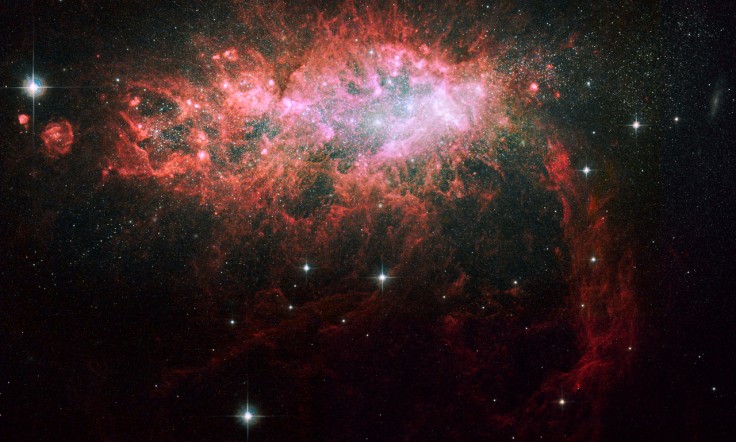Every Saturday is a special day here at iTech Post, especially for those who love anything space-related. Why? Because every Saturday is a #SpaceSnap Saturday!
If this is your first time seeing a #SpaceSnap feature, it is a basically a weekly series we do here at iTech Post wherein we feature the jaw-dropping photos taken by observatories of the many things found in space. These include planets, moons (otherwise called satellites), galaxies, star clusters, asteroids, and many more.
Today, we are featuring a galaxy that may be considered unusual that was photographed by the Hubble Space Telescope a couple of years back. Without further ado, let us show you the Hubble's photo of starburst galaxy NGC 1569.
Hubble Space Telescope's Photo of Starburst Galaxy NGC 1569

The photo of NGC 1569 you see above was released by National Aeronautics and Space Administration (NASA) in 2008. "A new analysis of NGC 1569 shows that it is one and a half times farther from Earth than astronomers previously thought," says NASA.
The Hubble has made a couple of observations of NGC 1569 through the years. Using its Wide Field Planetary Camera 2 and Advanced Camera for Surveys, the Hubble made observations in September 1999, November 2006, and January 2007.
A focal point of the image is "the brilliant core of one of the most active galaxies in our local neighborhood."
Related Article : #SpaceSnap Hubble Space Telescope Snapped a Photo of the Cigar Galaxy for Its 16th Anniversary
NGC 1569
The NGC 1569 is classified as a dwarf irregular galaxy as well as a starburst galaxy, which is defined by COSMOS as "galaxies that are observed to be forming stars at an unusually fast rate (about 103 times greater than in a normal galaxy)."
Per NASA, the core of NGC 1569 is 5,000 light-years wide. It is located around 11 million light-years away from our planet. NASA says in a separate article on its website that the galaxy was discovered in 1788 by William Herschel, who is also credited for the discovery of Uranus and its moons.
The galaxy is home to three star clusters that each contain more than a million stars. These star clusters are considered to be some of the biggest ever discovered.
Hubble Space Telescope
Launched from the Kennedy Space Center in Florida on April 24, 1990, the Hubble Space Telescope has been in service for more than 30 years now. It is a joint project between NASA and the European Space Agency (ESA).
The space telescope was named after Edwin Hubble, an American astronomer. It is part of NASA's so-called Great Observatories, along with the Chandra X-ray Observatory, the Compton Gamma Ray Observatory, and the Spitzer Space Telescope.
The Hubble is orbiting our planet at an altitude of around 340 miles. It travels at the speed of around 17,000 miles per hour, which makes it capable of completing one full orbit in just 95 minutes.









